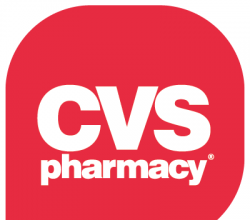 Just as smartphones and iPads have ushered in a paradigm shift in personal technology, so are electronic medical records (EMRs) quickly replacing paper in the doctor’s office.
Just as smartphones and iPads have ushered in a paradigm shift in personal technology, so are electronic medical records (EMRs) quickly replacing paper in the doctor’s office.
 Just as smartphones and iPads have ushered in a paradigm shift in personal technology, so are electronic medical records (EMRs) quickly replacing paper in the doctor’s office. More and more patients are being greeted with health tablets, televisions and electronic kiosks as they check in for appointments, in lieu of traditional clipboards. While these tools serve the usual purpose of gathering necessary data from patients, tablets in particular, with hands-on, direct and customizable features, provide a new opportunity for healthcare providers to present patients with targeted health information as they wait.
Just as smartphones and iPads have ushered in a paradigm shift in personal technology, so are electronic medical records (EMRs) quickly replacing paper in the doctor’s office. More and more patients are being greeted with health tablets, televisions and electronic kiosks as they check in for appointments, in lieu of traditional clipboards. While these tools serve the usual purpose of gathering necessary data from patients, tablets in particular, with hands-on, direct and customizable features, provide a new opportunity for healthcare providers to present patients with targeted health information as they wait.
Companies are utilizing this new medium to transmit information, and are also embracing the opportunity to deliver target advertisements specifically to consumers with a purpose, and therefore most likely to be seeking healthcare products. Moreover, consumers will be more likely to pay attention to what companies have to say if they are presented with such information at a time when healthcare is their point of focus.
“Pharmaceutical companies spend billions of dollars a year advertising on television, and many of those viewers will never use their products,” Joe Hogan, CEO of Epion, producer of the Smart Screen® tablet, said. “If you’ve got consumers in the doctors’ offices, however, it makes for a highly targeted ad campaign.”
The medical tablet sector is part of the telemedicine market, which includes patient-physician communication tools and services, healthcare delivery services and research data analysis. The industry grew to $11.6 billion in 2011, and is expected to triple to $27.3 billion by 2016, according to a BCC Research study. The hardware/software technology segment reached $4.6 billion in 2011, and is expected to reach $11.3 billion in 2016.
A significant reason for the sector growth is the recent healthcare reform push, which has caused patients and insurance companies to actively seek cheaper, more efficient healthcare tools. The opportunity to reach a targeted audience can have a profound impact on both healthcare service revenue models and quality of care, according to experts.
“Arguably, this is the Holy Grail of advertising,” Andy Ibbotson, CEO of Digital Asset, producer of the PatientPad® tablet, said. “It’s delivering the right message to the right person in the right location at the right time.”
Currently, most seats at this Round Table are held by pharmaceutical and medical device companies. Ibbotson explained that companies such as Botox sign up to promote events, including open houses and monthly specials through the tablets. Others produce commercials that target certain demographics and needs. Meanwhile, Epion has partnered with the Mayo Clinic, which plans to distribute health-related information through these tablets.
The campaigns extend to tangential, health information-focused entities as well. Publications, most notably fitness magazines, institutions, such as the American Academy of Dermatology and non-profits, like the American Cancer Society, are also embracing these devices.
The aesthetics and “feel” of the tablets entice engaged users at unprecedented levels. Buttons like “Touch Here to Begin” that begin to ask questions engage the users, reeling in eyeballs that will be directly affected by the content provided. Patients sign into the system on the tablets, complete the necessary disclosures and consents, and then proceed to explore information that is offered within areas, which can include drug commercials, news, diagnosis and treatment regimens, interactive games and more. This is the same logic used in the targeted advertising campaigns on the internet that have helped keep the entertainment industry afloat.
The tablets also deliver pharmaceutical coupons, one of the most important and pressing issues in the space.
“[Half] of prescriptions go unfilled because patients either can’t afford it or it’s not convenient,” Hogan said. “However, pharmaceutical companies love to deliver coupons to patients – and when coupons are delivered to patients with prescriptions, the pick-up rate jumps from 50 percent to 80 percent.”
Tablets have also paved the way for the more interactive transfer of information. For example, patients can allow themselves to be captivated by any of over 150 games that the Smart Screen® offers, all of which are geared to distribute valuable information about healthcare in one way or another. Companies’ advertisements on tablets may also soon take a turn toward games.
“[Interactive modules] are revolutionizing the way that people view education,” Hogan said. “When patients play games for ten minutes, they can learn the same in that amount of time as if they had read an article for ten minutes.”
The themes of these games are not necessarily rooted in healthcare, but instead general entertainment to keep users engaged and eyes focused on the screen. Hogan explained that patients can begin by choosing a specific disorder on the tablet prior to gaming; then, for every move that patients make while playing tic-tac-toe, for example, a bubble pops up with a factoid about that health condition.
Still, some have speculated that there is an underlying risk of tablet advertisements undermining physicians’ authority. The concern is that the drug companies have the ability to directly influence patients with such timeliness, leading to patients being more hesitant to follow the doctor’s suggestion of an alternative treatment or drug.
However, experts are quick to refute. “That’s not an issue with our solution,” Ibbotson said. “Doctors can choose what content is available to their patients, and so have ultimate say over the information.”
“At the end of the day, patients are already exposed to this information,” Hogan said. We’re just providing it in a more convenient medium.”








